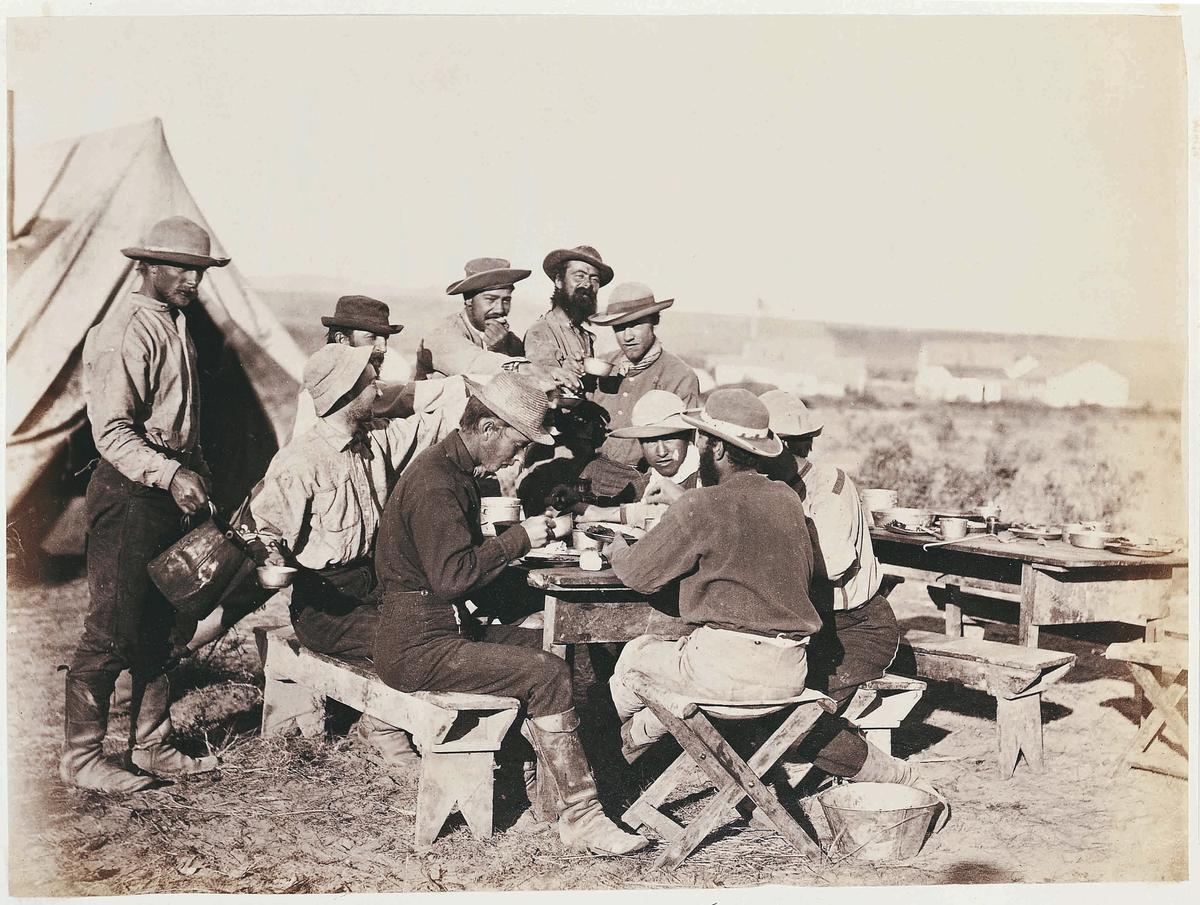The rapid expansion and technical improvements of the railways, the greater expendable income of the middle classes and the greater sophistication of photography all combined to make it possible for foreign sites not only to be visited by ever increasing numbers but also for armchair travel to more distant and more exotic places easier.
This book is an anthology of travel photography between 1850 and the outbreak of the First World War. It is worldwide in its scope and divides the globe into four large areas where European travel photographers concentrated their efforts: Africa, Europe, the Americas, and Asia and Oceania.
The evolution from the daguerreotype, through the paper negative technique and the wet collodion process to the gelatin silver print marched in tandem with global exploration. These early black and white and sepia photographs capture some of the wonder of discoveries first seen at in drawing rooms (shown above, William Henry Jackson’s photograph of various members of the 1871 Great Survey of the American West, exploring what became Yellowstone National Park), and as yet uncorrupted by multi-nationalist developments and mass tourism.
The 230 photographs selected in this book are taken from the collection of the Société de Géographie, the archive of which began with a donation of 49 pictures taken in 1861 by the French traveller, Désiré Charnay, of the ruins of Yucatan. The opening of the society’s permanent headquarters in 1878 and the appointment of the British chemist, James Jackson, as librarian, initiated collecting on a large scale.
- Olivier Loiseaux, ed, Image and Exploration: Early Travel from 1850 to 1914, Prestel, 240pp, £45 (hb)


